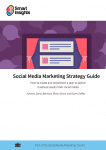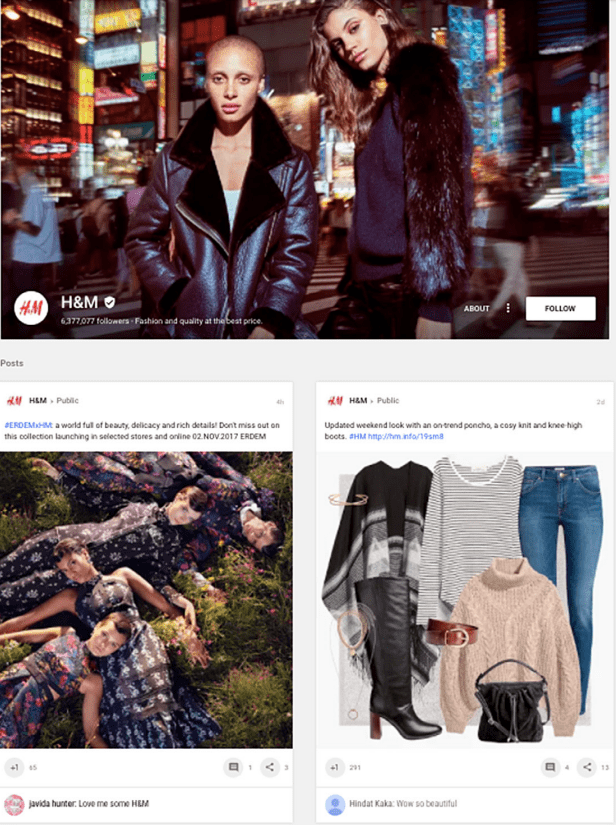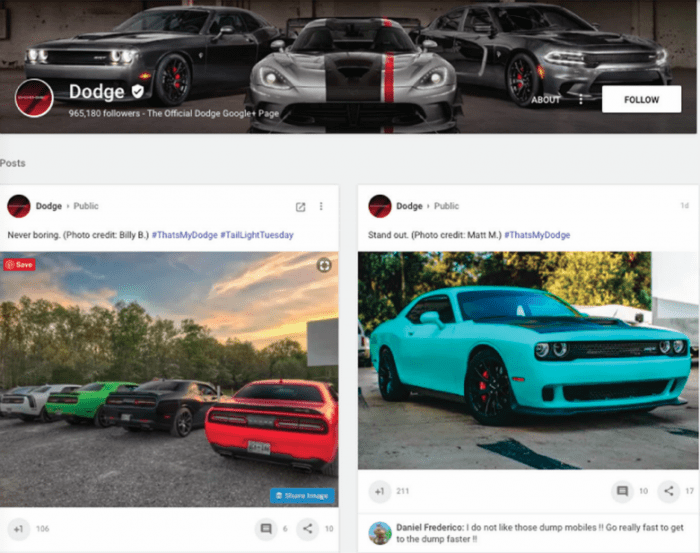Google+ is Google’s own social network, enabling brands to build relationships with prospects, customers, and other businesses
Similar to other networks, you can share information and images, promote yourself as an individual and, if used correctly, Google+ can be a powerful social media marketing tool. The importance of Google+ should be assessed on an individual basis, as it is based on your unique appeal. If it is thought to be of benefit to your brand, it should be used as part of your overarching social media strategy.
What is Google+?
Google+ is Google’s flagship social network, allowing users to connect easily and often, through interests and friendship. It’s not an independent service – instead, it is integrated and connected through all Google services as part of the ‘ecosystem’.
Interactions with individuals or companies are based on profiles or pages. Here is a useful example created by Google to share tips and hints on using Google.
Understanding Google+
In many respects, Google+ is more of an ‘information network’ than a social network. Facebook was created to connect with friends and socialize, and LinkedIn to connect professionals, whereas Google+ is to find others with similar interests.
Social networks generally come in two forms: asymmetrical and symmetrical. Symmetrical social networks require two users to be ‘friends’ or fans of one another before they can connect. Examples of symmetrical social networks include Facebook and LinkedIn.
An asymmetrical social network allows someone to follow someone else without them having to follow back in order to benefit from what that person is posting about. Twitter is a good example of an asymmetrical social network, as well as Facebook’s (fan) pages.
Google+ is an asymmetrical social network too and this gives users the ability to grow their network of followers much more easily because the growth of the network is not dependent on reciprocity. Cristopher S. Penn has pointed out1 that because reciprocity is optional, people seem more willing to connect on networks because they are given the freedom of choice.
Who is using Google+?
Towards the end of 2013, when Google+ was more of a standalone network, it released figures claiming it had 540 million monthly active Google+ users with 300 million monthly active ‘in-stream’ users.
Since then, it has slowly become an infrastructure for all Google products, with profiles immediately created when a user opens a Gmail account. So more realistic figures are believed to be of 2.2 billion users, only 4-6 million of them are active. According to StatisticBrain, Google+ is:
- Approx. 74% male
- 72% 35+
- Dominated by U.S. users, who make up 55% of its audience
Brands using Google+
Despite the technology and electronics bias of Google+, brands from all industries have embraced the offerings of the network.
Unsurprisingly, the Google+ profiles with the biggest following tend to be Google services (YouTube, Chrome, G+ itself, and Android) however, there are a few other non-Google related brands in the top 10.
Here are some brands using Google+ effectively in 2017.
- H&M – Now with more followers than global high-end fashion brands, clothing retailer H&M shares collections and images of interest to their audience appending each post with a related #HM hashtag. Posts tend to be 1-2 per day, receiving hundreds of worldwide +1s on each.
- Dodge - The brand page shares its own content but also images from fans to show off features or the history of the car designs.
Assessing the potential of Google+ in your market
Start by understanding how your audience uses Google+ When Google+ was first launched, a lot of brands signed up with no strategy to gain a first-mover advantage over competitors, but without knowing the relevance to their market.
One way to begin gaining insight about your audience is to listen out for what people are saying about your brand, products and the wider industry as a whole. What are people talking about? Is there a discussion already taking place that you can tap into? To start, begin by searching for keywords and hashtags in Google+. The results will show you what content is popular, what is trending and what communities already exist.
‘Communities’ is a feature that allows users to create groups around topics of interest, engaging in either private or public conversation. Likewise, through ‘Collections’ users can create themed boards, similar to Pinterest.
Why should you be using Google+?
Those who do use it, sing its praises. According to the American Consumer Satisfaction Index, a survey of 180,000 consumers showed that Google+ scored a satisfaction rating of 81/100. For context, Facebook was scored at 68/100 in consumer satisfaction.
There is also no denying the potential improvements that Google offers because of search engine optimisation (SEO). Whilst Facebook, LinkedIn and Twitter are walled gardens, restricting Google from accessing much of their data, Google+ is (unsurprisingly) open to Google’s web crawlers allowing content to be indexed and served up in search results. Content that originates from Google+ can actually rank in instances where a website may not, and is increasingly included in Google search results, with priority given to authors within your Circles or content with a lot of +1s.
As Google co-founder and CEO Larry Page who said:
“If you ignore GooglePlus, Google Search will ignore you”!
How will you benefit from using Google+?
There are a number of potential benefits to using Google+ as long as you are willing to dedicate the necessary time and resource to make it work and take advantage of it being a relatively new, relatively niche network.
- Targeted communications - Circles enable businesses to communicate directly with certain groups. For example, a sporting goods manufacturer or retailer can use Circles to share content and broadcast directly to these groups and send targeted emails.
- SEO - Each piece of content made on Google+ has a unique URL. This means that it can appear in the SERPs of Google. And given that for most businesses, appearing at the top of Google search results is the holy grail, it’s a good way to improve your company’s ranking.
- Reach - Also, given that Google always ranks its own products higher when it comes to SEO, a post on Google+ is more likely to show up in search results than other webpages or social media sites. So if your customers fit into an active and engaged community on the network, it could be a good opportunity to get their attention.
- Local SEO - The integration of Google+ into its search engine means that searches for local businesses are only getting better. When a search is performed for a local place, Google uses factors such as the amount of +1s on a Google+ Business Page to determine which information ranks highest in the carousel results. So if you’re looking for more page views on your website, sharing content to get more +1s is a simple, quick trick to help you achieve it.
- Engagement - The network is interest driven, rather than generic like other social media sites. This means that there are some very active and passionate communities consuming and engaging with content. It is a great way to build a niche audience.
- Usability - There are also a number of usability benefits over other social networks; there are fewer adverts, you can write longer posts, visuals can be larger, posts can be formatted to make them unique, you can share content to only relevant circles too so there’s more chance that people will read it.
from Blog – Smart Insights https://www.smartinsights.com/social-media-marketing/google-plus-marketing/introduction-marketing-google/
via Tumblr http://euro3plast-fr.tumblr.com/post/167798704779



No comments:
Post a Comment